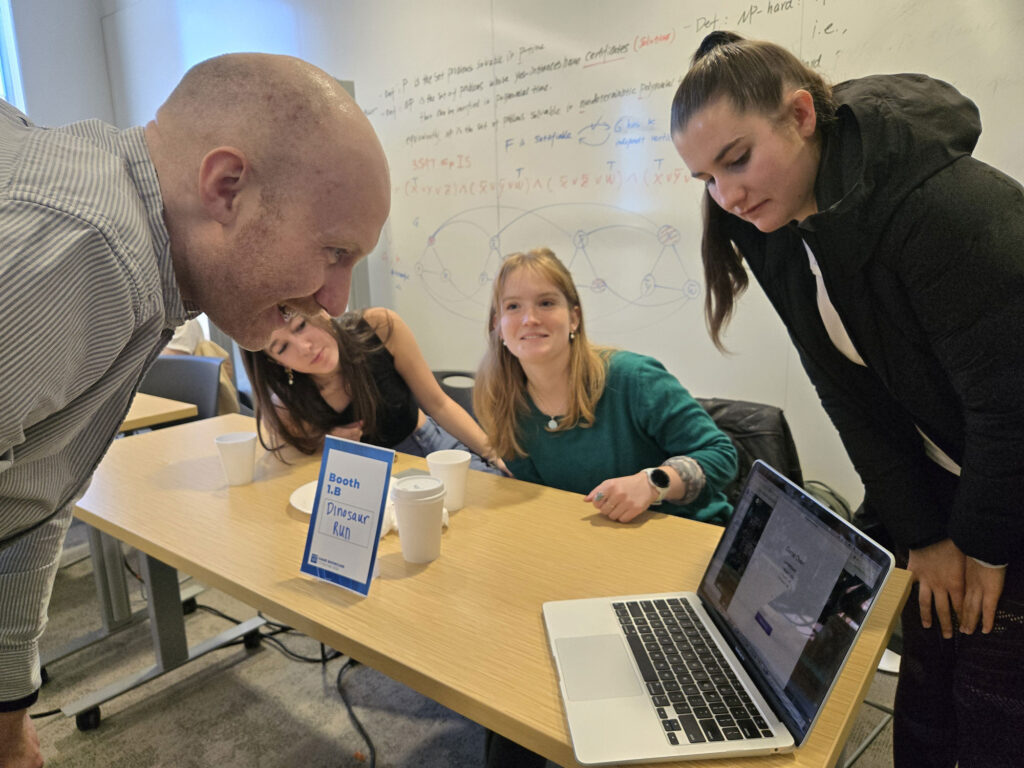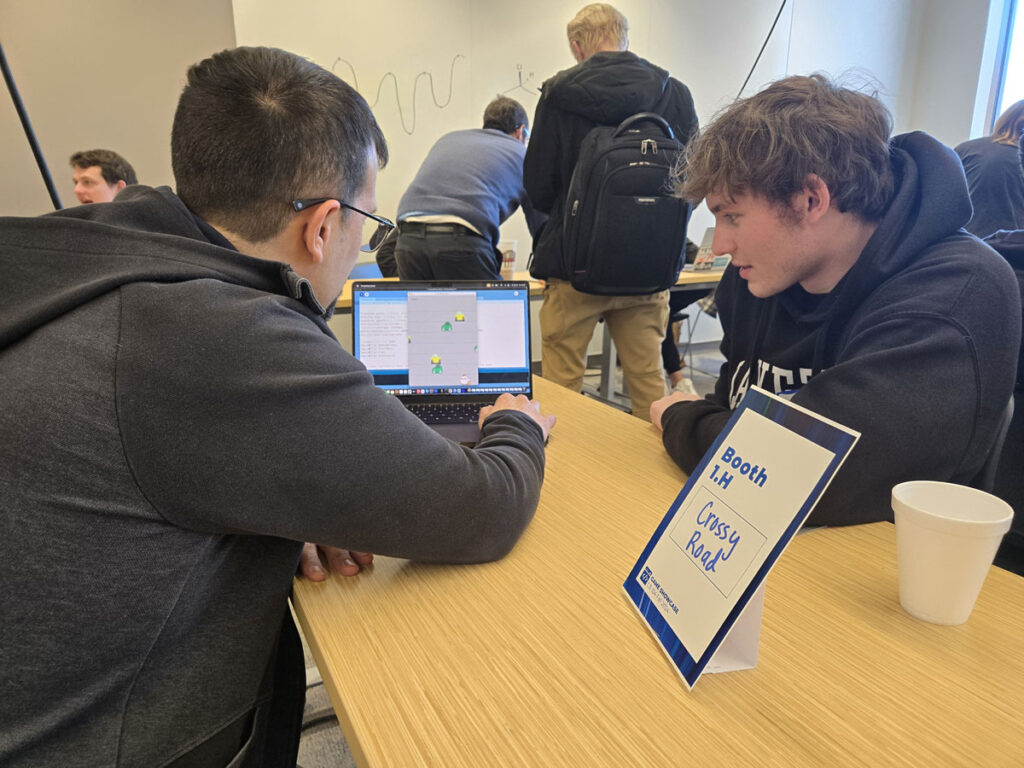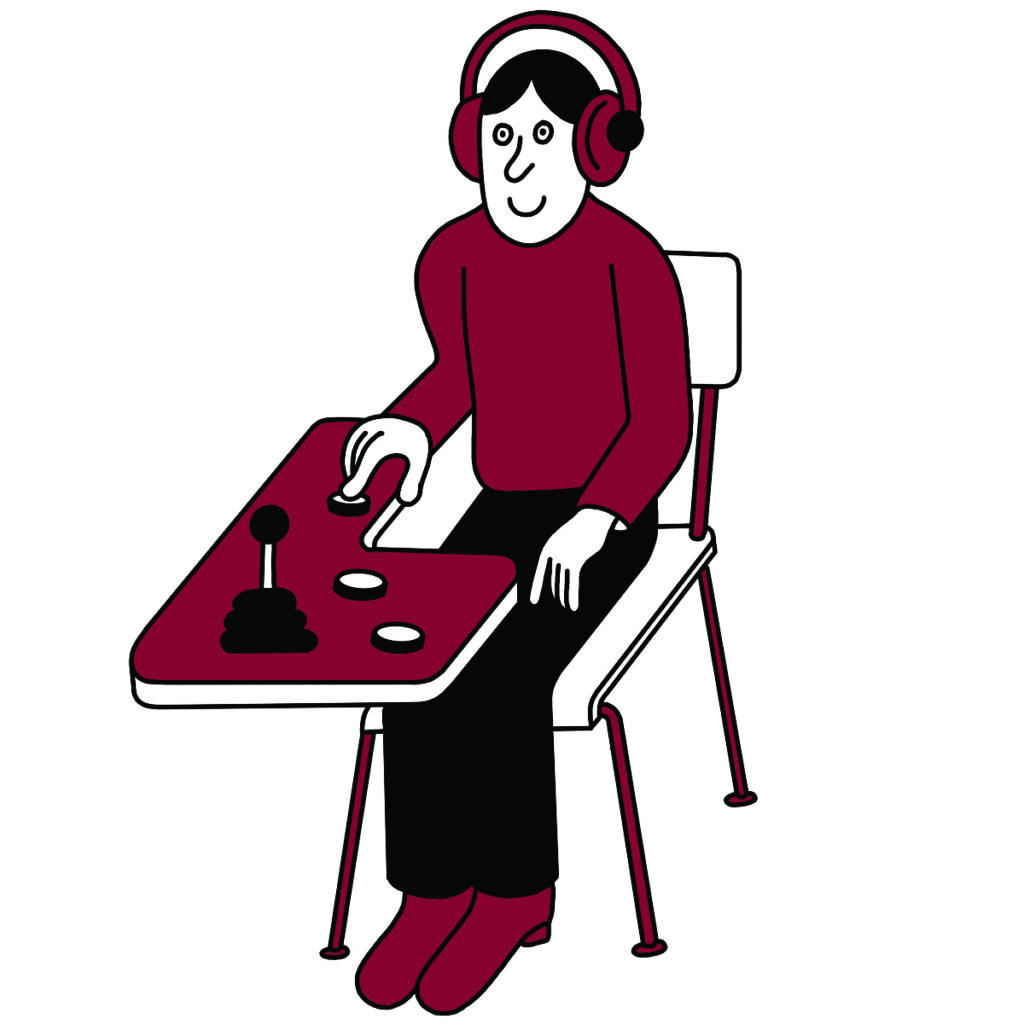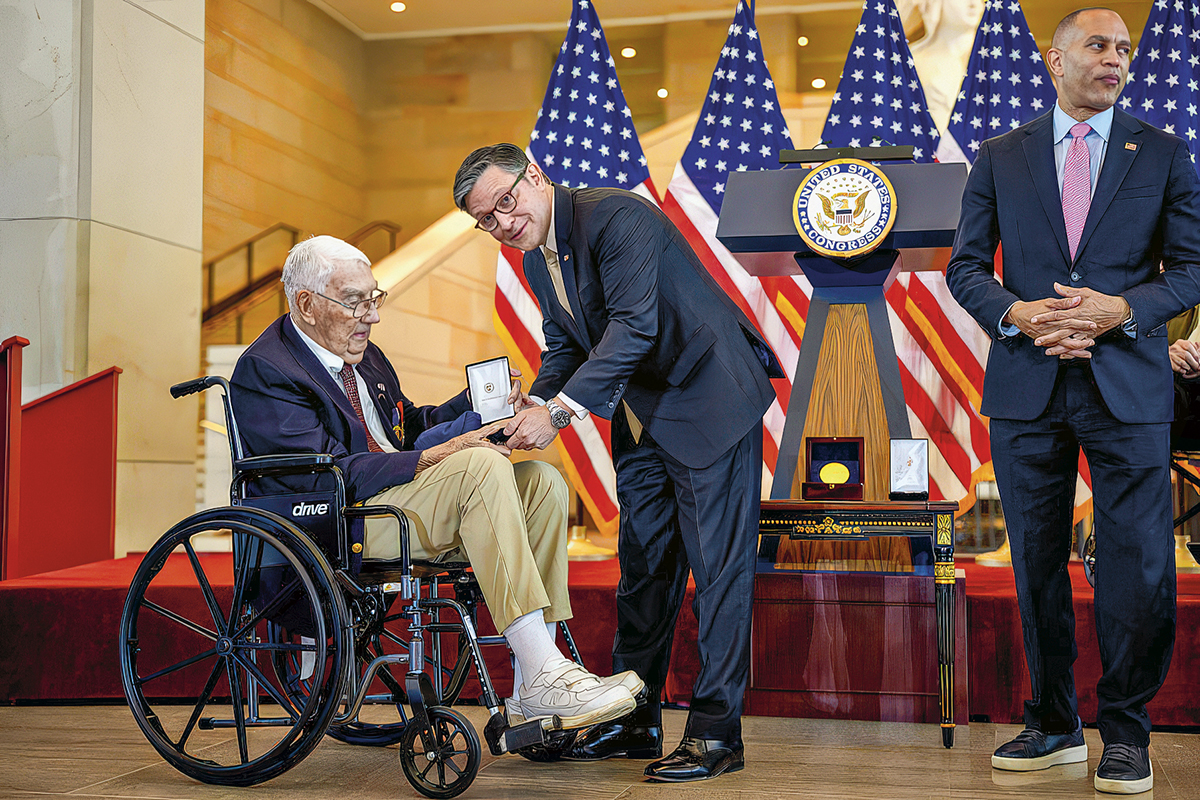Leveling up
When students design computer games, they learn about coding—and critical thinking.

Photographs By Lisa Gabel; Illustration By Antonio Pinna
When they first set foot in the classroom, most students in Prof. Lauren Biernacki’s Computer Gaming course have never written a single line of code. By the end of the semester, however, they walk out having created multiple full-fledged computer games.
By engaging in a series of interactive experiences and challenges throughout the spring, CS 104 students aren’t just improving their coding abilities. They’re developing essential problem-solving skills and tactics they can carry with them in whatever educational, life, or career paths they may choose to follow.
Computer science merges the creative, technical, and logical, says Biernacki, assistant professor of electrical and computer engineering. “It’s a lot like solving a puzzle while also bringing an artistic vision to life,” she says. And since playing games is an intrinsically fun activity, she adds, it’s easy to get students excited, motivated, and invested in the material.
With their widespread applicability and appeal to students of all majors, courses like Computer Gaming are now more in demand than ever, Biernacki says. CS 104 is offered in both spring and fall semesters (other sections are taught by Christian López, assistant professor of computer science), and is one of two introductory programming courses at Lafayette.
With each iteration, CS 104 attracts an increasingly diverse group of scholars— ranging from computer science majors who are intently pursuing careers in software engineering, to students who simply want to explore a new creative outlet. “Having such a wide variety of students from different disciplines—from economics and engineering to biology and philosophy—looking at the same problems from their distinct perspectives makes for some truly engaging conversations and really cool projects,” Biernacki says.
“Game building feels like painting or making a film in some ways,” says Liu, a dual major in film and media studies as well as English. “It’s a lot of experimenting and adjusting factors to get the effect you want, and I get to utilize my working knowledge of coding, animation, and different computer programs in a way that engages my love for art and storytelling.” Liu, who will graduate in 2025, came across the course while searching for a way to satisfy a science requirement for graduation that didn’t involve a traditional lab space.
At the outset of the course, Biernacki introduces students to fundamental computer programming concepts, including code writing and user interaction. She also challenges students with weekly “quests,” or smaller programming activities. “Students select from a menu of exercises and earn points for each quest they complete, so it’s like a gamified view of homework,” Biernacki says.
Rather than a traditional computer lab, Biernacki’s students use their personal laptops and free downloaded software to create each of their projects, allowing them to access their work anywhere.
Throughout the semester, she guides her students through three more complex game-development projects based on arcade classics Snake, Blackjack, and Root Beer Tapper, which increase in difficulty as the semester progresses. Whereas quests require students to write about 50 lines of code, these multilayered projects can involve writing up to several hundred. “The instructions get more vague as we get closer to the end of each project,” Biernacki says, “and that enables students to apply their creativity and critical thinking skills.”

The class culminates in a final project, in which students either work independently or team up in small groups to design and build another classic video game of their own choosing. “At the end, they can look back at this tangible, playable game they created entirely from nothing.”
To round out the experience, students present their work at the end-of-semester Computer Gaming Showcase (pictured opposite and above), where Lafayette staff, faculty, students, and family members are invited to demo the games. “It’s really exciting, especially for those of my students who have never programmed anything before,” Biernacki says. It also helps students identify and patch up any errors in their coding, much like game testing does for developers prior to a game’s release.
One resource utilized in the course that makes it particularly successful, Biernacki adds, is the Academic Resource Hub, which provides students with academic support from fellow student mentors who have previously taken CS 104. The mentors, called Mentored Student Group Leaders, attend lecture sessions, facilitate guided study groups outside of the classroom, and help answer students’ questions as they work through errors or new concepts. “Getting help from a peer who can work closely with them through something they’re stuck on is very valuable to students,” Biernacki says.
Aside from building confidence in their programming abilities and understanding of modern technology, Biernacki aims to help her Computer Gaming students develop a more logical and team-oriented approach to problem-solving that they can apply to all areas of life. “There are many different ways to implement something in computer science,” she says. “Following a logical series of steps, reasoning through challenges, and working with people with different strengths, backgrounds, and expertise are essential when it comes to working toward better, more efficient solutions—in both the computer science field and the real world.”




